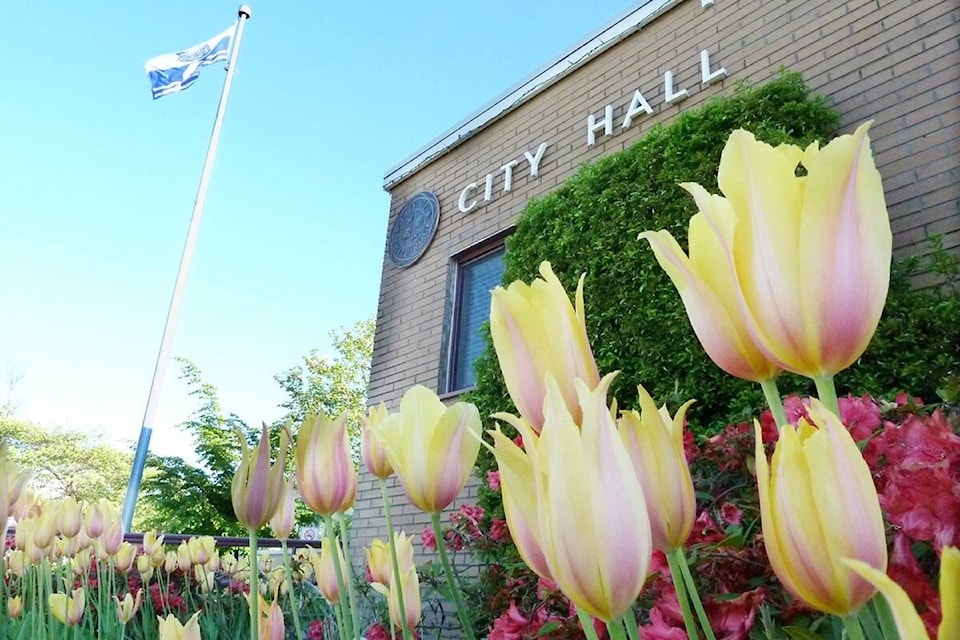Two new mosaics planned for the plaza in front of the residential/commercial Saltaire Development (at Thrift Avenue, just east of Johnston Road) promise a strong reflection of Indigenous culture and heritage.
At its April 11 regular meeting, White Rock council endorsed recommendations of the Public Art Selection Panel that will move forward work on the project, scheduled to be complete by October.
Tentatively titled ‘Joined’, the project is proposed by internationally noted artist/activist Marianne Nicolson of the Musgamakw Dzawada’enuxw First Nations (part of the Kwak’wala speaking peoples of the Pacific Northwest Coast), now based in Montreal.
The inlaid cut-rock mosaic works featuring First Nations-inspired pictograph designs, will be installed on a raised triangular feature (formerly site of a planter) and an existing semicircular area between amphitheatre style benches.
In endorsing the recommendations, council directed staff to work with the Saltaire strata council to negotiate a public art installation, management and funding agreement (a $200,000 budget for public art on the site was part of Saltaire’s community amenity contribution to the city).
READ ALSO: City of White Rock seeks arts components in new development
READ ALSO: Critics slam ‘broken eggbeater’, ‘hunk of metal’
It also directed staff to award the contract for the art to Nicolson, but with an amendment making it contingent on Nicolson consulting with, and receiving agreement from, Semiahmoo First Nation on imagery used in the mosaics.
That followed extensive questioning of cultural development manager Elizabeth Keurvorst, who presented the report and recommendations, by Coun. David Chesney.
Chesney wanted to know to what extent Semiahmoo First Nation had been involved in the selection process, and whether renowned Semiahma artists Leonard and Leslie Wells had been made aware of the call for artists.
“Generally, I like the idea,” Chesney said, “but this council has, in the past, made a very specific gesture for public art to try to include, and work with, local artists.”
Keurvorst said that, while she was not aware of any attempt to directly contact Leonard and Leslie Wells, the city had reached out to SFN to have members be part of the selection process and had also circulated the call for artists to SFN, as well as its database of all local artists.
She said that while SFN representatives were not able to be part of the process, Nicolson has, in fact, made it clear to the panel that she wanted to involve SFN in the work.
“Much of the composition will depend on this consultation,” Nicolson wrote in her concept plan, while noting that “pictographs are an indigenous way of mapping and knowing our world… they indicate a deep relationship between people and the environment.”
The two mosaics, and the space between them, also symbolize to Nicolson “the division of the local landscape by the colonial-imposed border between the United States and Canada, which overlays and now divides a previously unified Indigenous space.”
“Key to the success of this project will be the community consultation to determine the images that would be appropriate to SFN,” Keurvorst noted.
“The next step will be Marianne Nicolson reaching out directly (to them),” Keurvorst added. “The pictographs that would be in the piece would be informed by (SFN).”
alex.browne@peacearchnews.com
Like us on Facebook and follow us on Twitter
